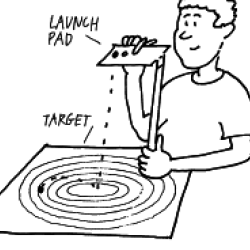Source Institutions
Source Institutions
Add to list Go to activity
Activity link broken? See if it's at the internet archive

In this activity (on pages 18-28), learners explore how the shape of seeds affects how they are dispersed by wind, birds, ocean currents and other means. Learners make predictions about seeds' ability to travel, and build devices to test their predictions. Tests include the Roll Test (rolled onto a target from a height), the Hitchhiker Test (a fuzzy cloth), and the Fly Test (distance from blowing). The "What We Know" introductory section introduces some of the various and amazing ways that seeds travel to locations far away from the plant the released them.
- 30 to 45 minutes
- 1 to 2 hours
- $5 - $10 per group of students
- Ages 8 - 14
- Activity, Simulation
- English, Spanish
Quick Guide
Materials List (per group of students)
- 2 magnifying lenses
- 1 package seed mix plus any seeds you find outdoors. Seeds such as maple, dandelion, cattail, or milkweed are great for the fly test in Part 2
- 1 palm-sized piece of flannel or fuzzy cloth (a sweat shirt or an old sock)
- 1 bending straw
- 1 funnel
- 1 marking pen
- 1 paper punch
- 1 small index card (3 x 5)
- 30 cm ruler
- clear tape
- glue or glue stick
- scissors
- 2 sheets of 8 x 11 paper
- 4 toothpicks
- 4 sheets of different colored, 8 x 11 paper
- 4 copies of p. 22 assembled into a target
Subjects
-
Life Sciences
-
Diversity of Life
- Plants
-
Ecology
- Ecosystems
- Populations
-
Diversity of Life
-
The Nature of Technology
-
The Design Process
- Research and Development
-
The Design Process
Informal Categories
- Gardening
- Nature and Environment
Audience
To use this activity, learners need to:
- see
- read
- touch
Designed specifically for
- Rural dweller
Culture, ethnicity, and gender
-
Girls
- Explicity developed for this group
Other
Foreign language versions of this resource:
Components that are part of this resource:
Includes alignment to state and/or national standards:
This resource is part of:
Access Rights:
- Free access
By:
Source Collection
- Science After School Consumer's Guide
Rights:
- All rights reserved, University of Nebraska State Museum and Nebraska 4-H, 2002
Funding Sources:
- National Science Foundation Informal Science Education Program, 9909496
- Howard Hughes Medical Institute
